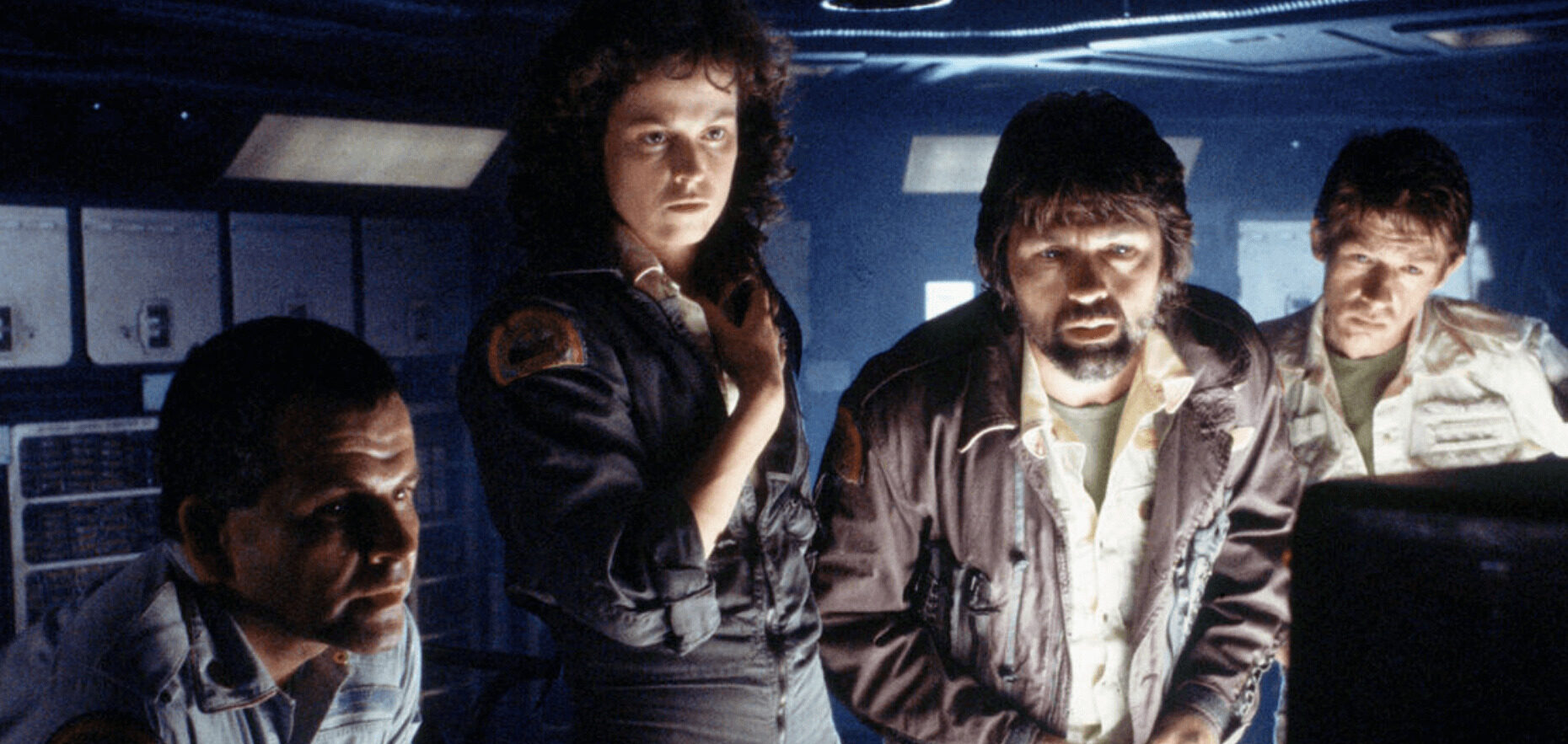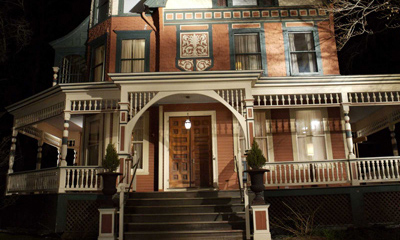Rewatching Old Favorites – The Alien Quadrology: Part I – ALIEN (1979, Director: Ridley Scott)
Christmas time is a great time to rewatch old favorites, especially when you’ve found the Alien Quadrilogy Box under the Christmas tree. What makes the Alien franchise so special – and so different from other horror franchises – is that the four movies are made by four different, equally talented directors, who were all allowed to put their own special imprint to their entry.
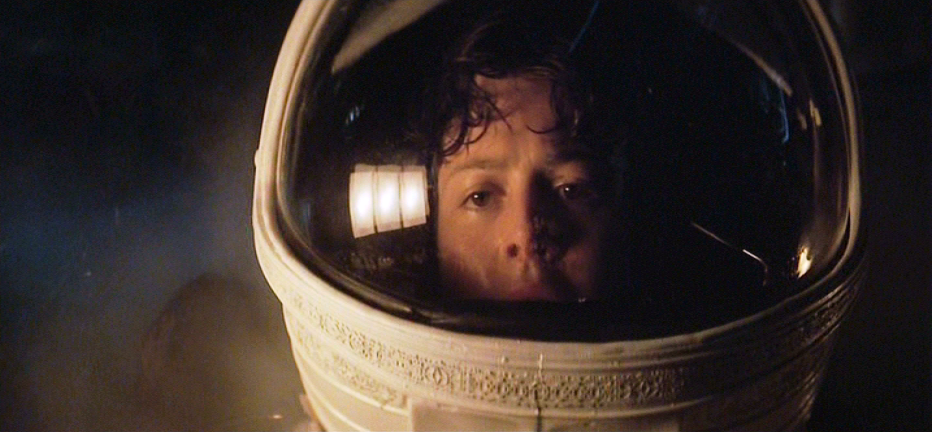
The movie that kick-started the affair, Alien, was directed by a then very promising young director called Ridley Scott. Prior to Alien, Scott had only directed one feature film, The Duellists (1977). He was approached after Walter Hill (who had co-scripted) had declined the offer to direct the movie because he felt uneasy with the ‘technical’ look of it. Alien was not only a breakthrough movie for its director, but also for its star: Sigourney Weaver‘s Ripley would become the world’s foremost interstellar heroine, a Joan of Arc in space, but one who would even survive hellfire.
I guess most people on the face of this earth will have heard about this movie, but for the few who haven’t yet: Alien is a horror movie about the crew of a commercial space ship picking up an alien life form on a distant planet on their way home to Mother Earth. The journey home becomes a nightmare.
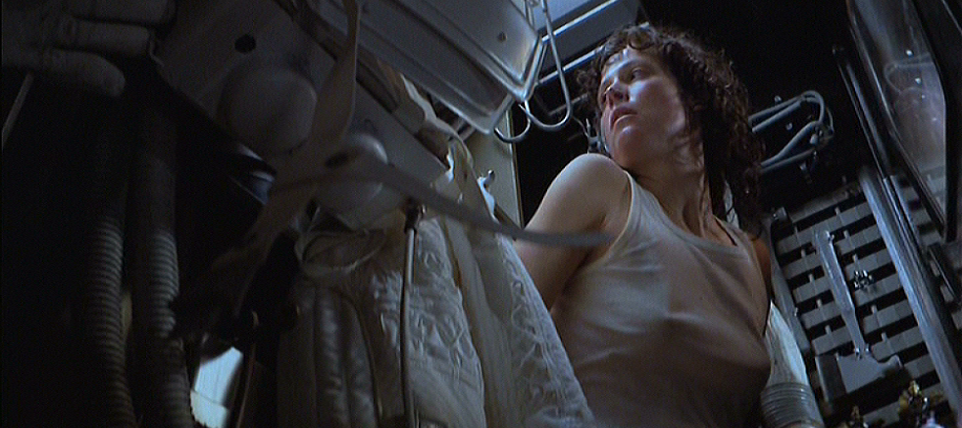
Above all Alien is a trip: it must be experienced, not just watched, preferably late at night, in a darkened house, with the volume above normal levels, so you can hear every rustle and breath. Some parts of the movie are almost ‘silent’, except for background sounds of dripping water or steam escaping from a leaking service-pipe. One of the tag lines of the movie was: “In space no one can hear you scream”. True, sounds do not resonate in the immense vacuum out there, but a space ship is a secluded sound cabin where even the beating of your own heart may sound disorienting, especially when there’s an alien monster lurking in the dark, waiting for you …
Alien is often called a near-perfect space horror movie. Near-perfect. Analyzing the storyline, you might notice some shortcomings. A good example is the scene in which John Hurt‘s character (who has been attacked by the alien organism) is accepted back on the space ship against all regulations. The door is unlocked (against Ripley’s orders) by a character who later appears to be a robot, but even the captain of the ship (who’s outside) asks Ripley to open the doors, and keeps pressing the point (even turning the request into an order) after Ripley has told him that the entire spaceship could become contaminated. That is highly improbable: a man in his position wouldn’t have ever put his ship and the entire crew in jeopardy to save one man (who didn’t seem to have much chance to survive in the first place!). You may also notice that special effects have improved a lot since 1979. In spite of H.R. Giger‘s magnificent design, the monster is still too much a ‘man in a suit’ (1).
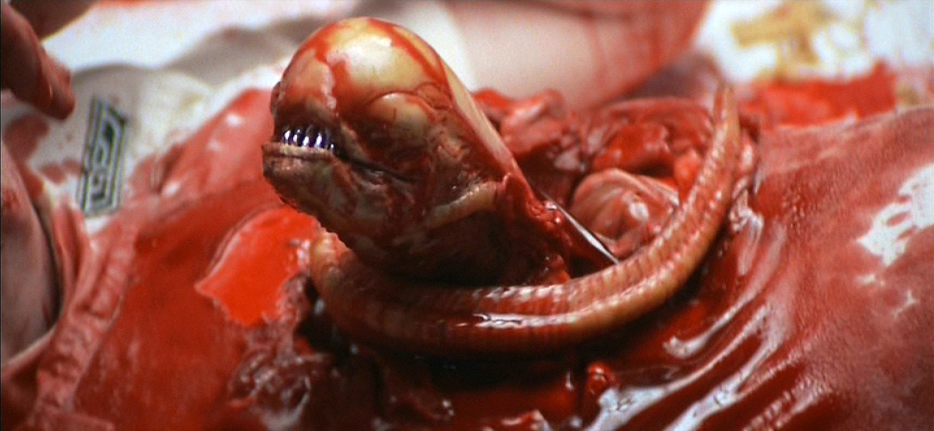
But never mind: this is a good old-fashioned horror movie in new suit. All clichés are intact – including the cliché of the mad scientist helping the monster in the name of science and progress – but they’re all presented with a nice, often bizarre twist. As said Sigourney Weaver became a star as Ripley (and the ‘striptease’ near the end even turned her into a sex symbol) but otherwise the characters are one-dimensional; one of them – the second female passenger – is a bit of a nuisance, a cry baby whose mental weakness was even disliked by Veronica Cartwright, the actress playing her. Cartwright nevertheless accepted the role because Scott convinced her that the character represented the audience’s fears and was therefore indispensable (2). The thrills and shocks haven’t lost the tiniest bit of their effectiveness. They’ve all become part of horror history: the egg field, the cat in the closet, the talking robot head, the countdown … The (in)famous chest-bursting scene is no doubt one the scariest moments in movie history.
Alien was also an ‘answer movie’ to Kubrick’s 2001, which was still considered to have created the definitive look of a sf-movie: unlike Kubrick’s space ship, which looked like a salon, the space ship from Alien is a dirty place : crew members are tired and complain about working conditions. This is not the place (or the space) to be. Space travel is dangerous, a long flight home, almost an illustration of the Bible verse Genesis 3:19 :
“In the sweat of thy face shalt thou eat bread, till thou return unto the ground (…)”
This may sound a little far-fetched, but religion would become an essential ingredient of the series, along with freudian and sexually-charged symbolism. Note that it’s a male person who gives birth to the alien and that it takes a woman to exorcise the demon.
Alien. 1979 – Cast: Tom Skerritt (Dallas), Sigourney Weaver (Ripley), Veronica Cartwright (Lambert), Harry Dean Stanton (Brett), John Hurt (Kane), Ian Holm (Ash), Yaphet Kotto ( Parker), Bolaji Badejo (The Alien) – Music: Jerry Goldsmith
Notes:
(1) These are Scott’s words and for this reason he chose not to show the monster in full most of the time. Scott, in an interview: “The most important thing in a film of this type is not what you see, but the effect of what you think you saw.” For Giger’s concept art, see: http://imgur.com/gallery/WdYwA
(2) “They convinced me that I was the audience’s fears; I was a reflection of what the audience is feeling.” Veronica Cartwright in: “Truckers in Space: Casting”, The Beast Within: The Making of Alien. ” a documentary directed Charles de Lauzirika about the pre-production and post-production of the movie.

